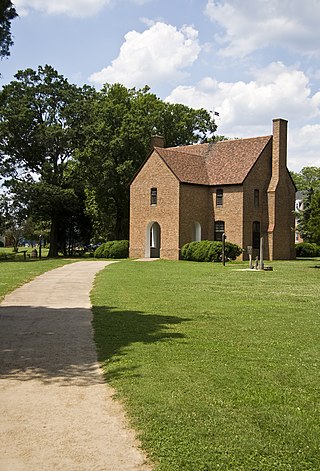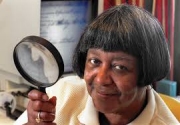Related Research Articles

Portuguese colonization of the Americas constituted territories in the Americas belonging to the Kingdom of Portugal. Portugal was the leading country in the European exploration of the world in the 15th century. The Treaty of Tordesillas in 1494 divided the Earth outside Europe into Castilian and Portuguese global territorial hemispheres for exclusive conquest and colonization. Portugal colonized parts of South America, but also made some unsuccessful attempts to colonize North America.

Slavery in the colonial history of the United States refers to the institution of slavery as it existed in the European colonies which eventually became part of the United States. In these colonies, slavery developed due to a combination of factors, primarily the labour demands for establishing and maintaining European colonies, which had resulted in the Atlantic slave trade. Slavery existed in every European colony in the Americas during the early modern period, and both Africans and indigenous peoples were victims of enslavement by European colonizers during the era.

St. Mary's City is a former colonial town that was founded in March 1634, as Maryland's first European settlement and capital. It is now a state-run historic area, which includes a reconstruction of the original colonial settlement and a designated living history venue and museum complex. Half the area is occupied by the campus of St. Mary's College of Maryland. The entire area contains a community of about 933 permanent residents and some 1,400 students living in campus dorms and apartments.

The Province of Maryland was an English and later British colony in North America from 1634 until 1776, when it made common cause with the group of Thirteen Colonies in rebellion against Great Britain and, finally in 1781—as the 13th signatory to the Articles of Confederation—it ratified its perpetual union with that group as the state of Maryland. The province's first settlement and capital was St. Mary's City, located at the southern end of St. Mary's County, a peninsula in the Chesapeake Bay that is bordered by four tidal rivers.

Peggy Stewart was a Maryland cargo vessel burned on October 19, 1774, in Annapolis as a punishment for contravening the boycott on tea imports which had been imposed in retaliation for the British occupation of Boston following the Boston Tea Party. This event became known as the "Annapolis Tea Party".

Margaret Brent, was an English immigrant to the Colony of Maryland, settled in its new capitol, St. Mary's City, Maryland. She was the first woman in the English North American colonies to appear before a court of the common law. She was a significant founding settler in the early histories of the colonies of Maryland and Virginia. Leonard Calvert, Governor of the Maryland Colony, appointed her as the executrix of his estate in 1647, at a time of political turmoil and risk to the future of the settlement. She helped ensure soldiers were paid and given food to keep their loyalty to the colony, thereby very likely having saved the colony from violent mutiny, although her actions were taken negatively by the absentee colonial proprietor in England, Cecil Calvert, the second Lord Baltimore, and so ultimately she paid a great price for her efforts and was forced to leave the colony.

John Casor, a servant in Northampton County in the Colony of Virginia, in 1655 became one of the first people of African descent in the Thirteen Colonies to be enslaved for life as a result of a civil suit.

Anthony Johnson was an Angolan-born man who achieved wealth in the early 17th-century Colony of Virginia. Held as an indentured servant in 1621, he earned his freedom after several years and was granted land by the colony.

St. Thomas Manor (1741) is a historic home and Catholic church complex located near Port Tobacco, Charles County, Maryland. Known as St. Ignatius Church and Cemetery, the manor house complex is the oldest continuously occupied Jesuit residence in the world. The mission settlement of Chapel Point was established in 1641 by Father Andrew White, S.J., an English Jesuit missionary. Father White ministered to the Potapoco Native Americans, some of whom he converted to Catholicism. Established in 1662, this is the oldest continuously active Roman Catholic parish in the American Thirteen Colonies. With the consecration in 1794 of Bishop John Carroll, St. Thomas became the first Roman Catholic see in the United States.
St. Inigoes, sometimes called St. Inigoes Shores, is a small, rural, unincorporated farming, fishing and crabbing community at the southern end of St. Mary's County in the U.S. state of Maryland that is undergoing a transition to small residential subdevelopment plots. Its western side is bordered by a number of coves and creeks that are connected to the St. Marys River, a brackish tidal tributary, near where it feeds into the mouth of the Potomac River and close to its entry point into the Chesapeake Bay.
The Exchequer of the Jews was a division of the Court of Exchequer at Westminster which recorded and regulated the taxes and the law-cases of the Jews in England and Wales. It operated from the late 1190s until the eventual expulsion of the Jews in 1290.

Slavery in Maryland lasted over 200 years, from its beginnings in 1642 when the first Africans were brought as slaves to St. Mary's City, to its end after the Civil War. While Maryland developed similarly to neighboring Virginia, slavery declined in Maryland as an institution earlier, and it had the largest free black population by 1860 of any state. The early settlements and population centers of the province tended to cluster around the rivers and other waterways that empty into the Chesapeake Bay. Maryland planters cultivated tobacco as the chief commodity crop, as the market for cash crops was strong in Europe. Tobacco was labor-intensive in both cultivation and processing, and planters struggled to manage workers as tobacco prices declined in the late 17th century, even as farms became larger and more efficient. At first, indentured servants from England supplied much of the necessary labor but, as England's economy improved, fewer came to the colonies. Maryland colonists turned to importing indentured and enslaved Africans to satisfy the labor demand.

Freedom suits were lawsuits in the Thirteen Colonies and the United States filed by slaves against slaveholders to assert claims to freedom, often based on descent from a free maternal ancestor, or time held as a resident in a free state or territory.
Mary Kittamaquund, daughter of the Piscataway chieftain Kittamaquund, helped establish peaceful relations between English immigrants to the Maryland and Virginia Colonies and their native peoples.

Harry Dorsey Gough was a prominent 18th-century merchant, planter, and patron of the fledgling Methodist Church in Baltimore, Maryland, in the early United States.
The history of African Americans in Maryland is long and complex. Southern Maryland is the home of the first person of African descent to be elected to and serve in a legislature in America. His name was Mathias de Sousa and he was one of the original colonists to arrive in 1634. Southern Maryland is also the place where Josiah Henson was enslaved, and the place of brutality he wrote about in his later autobiography, which became the basis for Harriet Beecher Stowe's "Uncle Tom's Cabin".

St. Mary's College of Maryland, originally known as St. Mary's Female Seminary, began in 1840 as a secular state-sponsored boarding school for women. Since 1966 it has been a four-year public liberal arts college and in 1992 it became a designated public honors college. One of only two in the nation to hold such a distinction at the time.

Agnes Kane Callum was a genealogist known for her research into Maryland's African-American history. She was a founding member of the Baltimore Afro-American Historical and Genealogical Society, a frequent columnist for The Catholic Review, and the founding editor of a black genealogical journal, Flower of the Forest. Callum was inducted into the Maryland Women's Hall of Fame in 2014.

The history of African Americans in Baltimore dates back to the 17th century when the first African slaves were being brought to the Province of Maryland. Majority white for most of its history, Baltimore transitioned to having a black majority in the 1970s. As of the 2010 Census, African Americans are the majority population of Baltimore at 63% of the population. As a majority black city for the last several decades with the 5th largest population of African Americans of any city in the United States, African Americans have had an enormous impact on the culture, dialect, history, politics, and music of the city. Unlike many other Northern cities whose African-American populations first became well-established during the Great Migration, Baltimore has a deeply rooted African-American heritage, being home to the largest population of free black people half a century before the Emancipation Proclamation. The migrations of Southern and Appalachian African Americans between 1910 and 1970 brought thousands of African Americans to Baltimore, transforming the city into the second northernmost majority-black city in the United States after Detroit. The city's African-American community is centered in West Baltimore and East Baltimore. The distribution of African Americans on both the West and the East sides of Baltimore is sometimes called "The Black Butterfly", while the distribution of white Americans in Central and Southeast Baltimore is called "The White L."
Rebecca Fowler was a woman convicted and executed for witchcraft in 17th-century Maryland. Around a dozen witch trials were conducted in Maryland during the 17th and 18th centuries, with most being acquitted. Fowler is the only documented legal execution of an alleged witch in Maryland history.
References
- 1 2 3 King, Julia & Chaney, Edward. (2011). Passing for Black in Seventeenth-Century Maryland. 10.1007/978-0-387-70759-4_5.
- 1 2 3 4 5 6 Bogen, David (2001-01-01). "Mathias de Sousa: Maryland's First Colonist of African Descent". 96 Maryland Historical Magazine 68 (2001).
- 1 2 "Mathias de Sousa". Maryland State Archives . Retrieved 2022-09-29.
- ↑ "Mathias de Sousa". Historical Marker Database . Retrieved 2022-09-29.
- ↑ Haugaard, Janet Butler; Wilkinson, Susan G.; King, Julia A. "St. Mary's: A When-Did Timeline" (PDF). St. Mary's Archives. p. 30. Archived from the original (PDF) on February 21, 2014.
- ↑ Falb, Susan Rosenfeld (December 1978). "Matthias da Sousa: Colonial Maryland's Black, Jewish Assemblyman" (PDF). Maryland Historical Magazine. Vol. 73, no. 4.